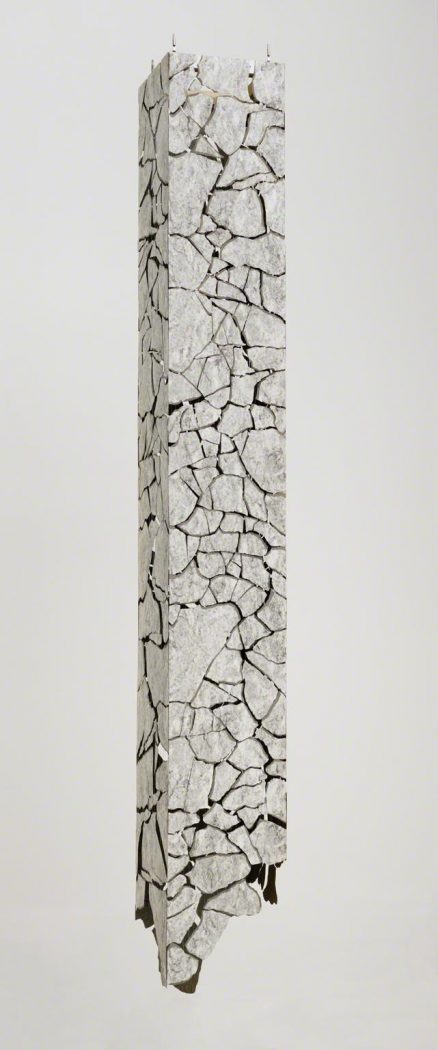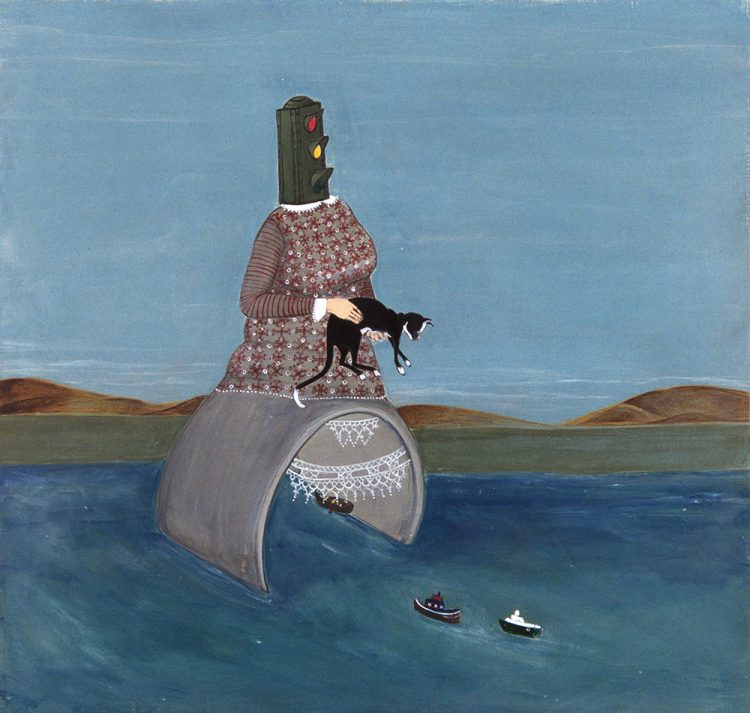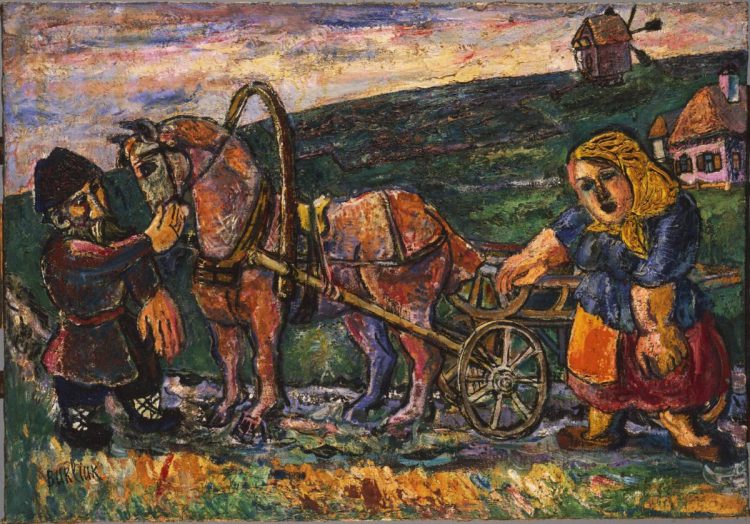A Phillips Collection Fellow in the Field: Ariana Kaye, The Phillips Collection Sherman Fairchild Fellow 2020-2021, on Alexander Calder
The Phillips Collection has four works in the collection by American artist Alexander Calder (1898-1976): Only, Only Bird (1951), Hollow Egg (1939), Untitled (1948), and Red Polygons (c. 1950). Recently, I visited a retrospective of Calder’s work at the Tel Aviv Museum of Art. The exhibition is titled Great Yellow Sun after a gouache drawing of the same name by Calder from 1973. At this exhibition I had the opportunity to learn more about Calder’s entire oeuvre and expand on the knowledge I gained about Calder’s works that are in The Phillips Collection.
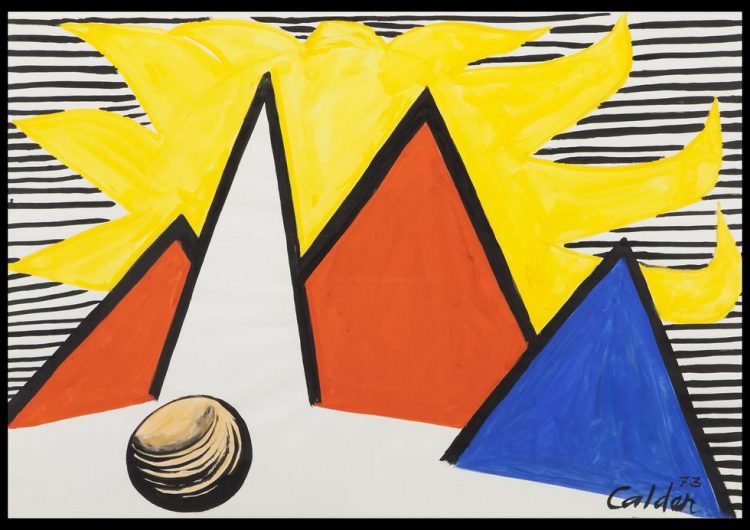
Alexander Calder, Great Yellow Sun, 1973, gouache and ink on paper, 74.6×109.5 cm
The title of the exhibition reflects the emphasis on an overlooked aspect of Calder’s production, his gouache paintings. This is an art form that he began experimenting with in 1940 and stand on their own—not preparation drawings for his famous kinetic sculptures, but artworks in their own right. The gouache works provide a painterly compliment to his three-dimensional ones and show us that through his work, what is on the page comes to life and becomes flat again. His act of creating gouaches was his “morning exercise” as he walked across the street from his house in Saché, France, to a building he bought and called his “gaucherie,” where he experimented with his paints.
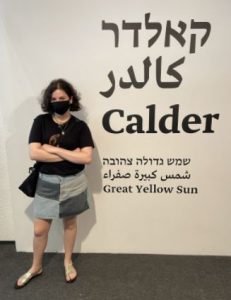
Ariana Kaye at the Tel Aviv Museum of Art
Calder was trained as an engineer, awakening his interest in making art that incorporated movement. His first attempt at moving art was a circus, where he created different small sculptures that could flip and turn like acrobats titled Cirque Calder. He then turned to make his famous “mobiles,” a term that artist Marcel Duchamp gave to his works when he visited Calder’s studio in 1931, referencing their mobile quality: they move as the wind does, creating different imaginative shapes in space as light hits a mobile and creates shadows. At first, his mobiles had representational shapes, but then became more abstract. The shadows and movements of the sculptures create unique and imaginative characters, such as the fish skeleton I see when I look at Red Polygons. The abstract shapes both in his sculptures and in his gouaches are usually painted in primary colors, reminiscent of the geometric primary colors seen in paintings by Piet Mondrian. The primary colors are indeed a reference to Mondrian, who was a longtime friend of Calder’s.
The sun in Great Yellow Sun refers to another one of Calder’s interests, the solar system. His sculptural works also remind me of the three dimensional diagrams that children have in their classrooms to learn about the rotation of the planets in space. In the text for the exhibition written by curators Ronili Lustig Steinmentz and Shahar Molco, they mention exactly that, that Calder’s work “can be seen as an exploration of energetic forces that combine aesthetics and the fourth dimension with scientific knowledge of physics, mathematics, and mechanics.” When Calder himself was asked how he makes his art, he also emphasizes a scientific artistic process, that his art is created “out of volumes, motion, spaces bounded by the great universe.”
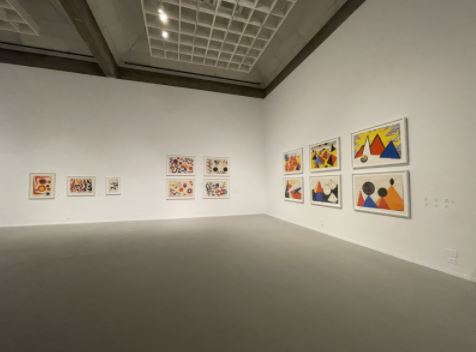
Exhibition view, Alexander Calder: Great Yellow Sun, Tel Aviv Museum of Art
Calder’s interest in science, movement, primary colors, and the universe all come together to make dynamic works of art that all kinds of people can find various points of connection to. They are playful, childlike, and dreamlike while also representing the keystones of modernism—straight lines, no clear narrative, and elementary colors.
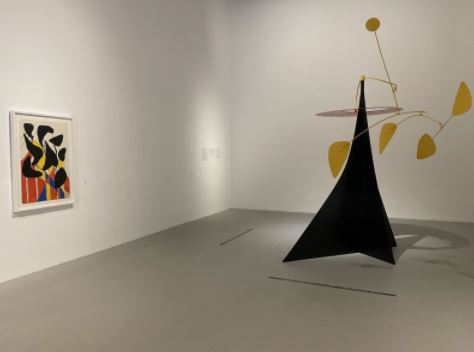
Exhibition view, Alexander Calder: Great Yellow Sun, Tel Aviv Museum of Art


